Plug Leads + Early Range Rovers + More - Morley 406



|
Dave wrestles with plug leads and lets rip on the dodginess of early Rangies, including the one he acquired for a dozen bottles of red
MORLEY'S SOAPBOX
Plug-lead ploys
Ignition leads. You probably don’t think much about them until the engine starts to miss, right? Exactly. But for all that, they’re one of the most common replacement parts when doing a tune-up or attempting to revive an engine that has sat for any length of time. You know the drill; plugs, leads, fresh fuel, points if it has `em and oil and a filter.
But let me ask you this: Have you ever tried to change the plug leads on an injected Holden five-litre? Right about now, there will be two reactions among those reading this. Half of you will be scratching your heads saying, "What’s Morley on about this time?" and the rest of you will be rolling your eyes and starting to twitch at the memory of one of the most ridiculously impossible jobs in automotive history. Okay, dialling in the cams on the legendary quad-camshaft, desmo-drive four-cylinder Porsche engine might be a bit more of a head-scratcher, but I’m here to tell you that the simple act of swapping plug leads on an injected Iron lion is no goddam picnic either.
| Ignition leads - Mick's tips of the trade
The problem is a combination of original design sin and the march of progress. See, even on a carburetted, old-school 308, the dizzy (from which emanate the ignition leads) is all squished up between the intake manifold and the firewall. But at least with the old 308’s port layout the intake manifold seemed more centralised, giving space to get fingers and new plug leads into place. But Holden’s march of progress then gave us, in 1989, the injected version where the lovely-looking bunch-o-bananas intake manifold extends farther back towards the firewall. So far back, in fact, that it almost completely covers the distributor cap (and leads!) The manifold doesn’t just form a roof over the dizzy, either. It’s a low roof and there’s sweet bugger all space between the bottom of the manifold and the dizzy cap.
So first-timers (and that was me yesterday) inevitably try to remove the old leads one at a time, and replace them with the new lead immediately to avoid getting the firing order out of whack. In any other car, you can rip them all out at once and just use your intimate knowledge of the firing order (it should be written on the engine somewhere) to replace them as you go. But not when you can’t see what you’re doing, you’re banging your head on the inside of the bonnet and doing everything left-handed. Which, even if you’re left-handed, is still a feat of contortionism.
The bloke next door is still chuckling as I write this, and I think he now knows some new words. Did I mention that the underside of the inlet manifold also has a sharp casting on its lower edge with pretty nearly de-gloved my left thumb in the two hours I wrestled with the bastard. Oh, and that I didn’t give the engine enough time to cool down, so I burned a fake, bunch-o-bananas eight-pack onto my torso the first time I leant over the engine.
Right now, though, you’re laughing, I know it. But I was turning the air blue. In the end, I rang my brother, the real mechanic, for advice. He just laughed and agreed that it was a right bastard of a job. He did offer up the fact that I could possibly undo the dizzy cap clips and try to wriggle it – vaguely – into the open where I could get at it better. But, he warned, you’ve then got to get those mongrel clips done up again. And he left it at that, suggesting that I was absolutely on my own on this one. You can be offhand like that when you live two States away.
In the end, though, after unclipping the dizzy cap, I moved it slightly out from under the manifold, just enough to do the lead swap correctly. And, somehow, I did manage to get the cap back on and the clips done up without toooooo much drama. And then I booted that V8 in the guts and prayed that it started and ran on all eight. It did, too.
I wonder if, back in the day when Holden was working on injecting the Iron lion, there was any discussion of this servicing issue. And if there was, I bet it all got knocked on the head for cost reasons. It’s a shame this got overlooked, because it’s a move to which I would have given two thumbs up. Mainly because I’d still have had two working thumbs.
What about you lot? What’s the dopiest piece of underbonnet design you’ve bumped into (probably literally)? Letters and postcards to the usual address.
HERE'S MY TIP
Top tip

At the Melbourne Bloke centre there are two coiled airlines – one a tightly-wound, flexible number I bought, the other a larger diameter coil of harder plastic donated by a mate. My original can be left anywhere without a problem – the other’s a nightmare. It’ll tangle with anything that comes near it, including itself. So bad, it has to be hung on a post out of the way or it’ll be in knots in seconds. My tip: spend enough to get decent coiled air-lines.
LETTERS
Rotten Rangies and fully loaded Leylands
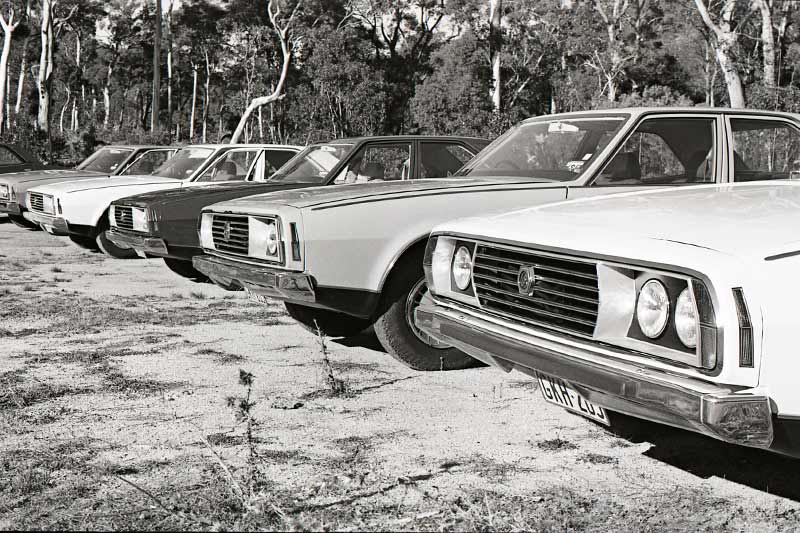
Regarding your recent column where you mention the Range Rover: My father bought the second-last one from the first shipment to Australia in the early 70s and it was great; reliable and not wobbly like his second one from 1980 which played up a lot. Range Rover softened the suspension too much and the side to side sway would make some people car-sick.
The first Rangie was very reliable but didn’t like dirty fuel and would block the carby, but that was pretty much the only thing that ever went wrong in the five years he owned it. The second one seemed possessed, with something new playing up weekly and he only kept it 18 months (warranties back then were only one year).
Money problems meant we had a P76 six-cylinder, four-speed manual in between which was surprisingly good considering it was used as Dad’s work car. And, being a builder, he always had about half a tonne in the boot, on the roof, and a box trailer hitched up. The Leyland went through a few clutches but that was it. Eventually we cracked the block on a trip to the Snowys so it’s probably at the Cooma wreckers if there’s anything left. Anyway, love your column. Keep it up,
Andrew Willis,
I once owned a Range Rover, Andrew, so I can absolutely sympathise with your poor old dad’s tales of woe. In the case of most makes and models, they usually improve over time as the manufacturer irons out the bugs and learns how to put them together. Not the weirdos at Range Rover back in the day. The early Rangies were certainly flawed, but as they got more complicated, they seemed to become even less reliable.
Finally, Range Rover arrived at the P38 model in the 90s and, from the perspective of many onlookers and those unfortunate enough to have actually bought one, also arrived at the absolute nadir of poor build quality and zero reliability. As in, this car stands as a monument to stink-lines and a steaming lesson to all other car-makers on how to get it wrong. And, no, I didn’t own a P38.
Mine was an early four-door that I acquired from a mate after swapping him a dozen bottles of plonk for the keys to the Rangie. He didn’t see me coming, he sent for me. The RR soon developed all sorts of excuses for not running properly, or at all, and that bloody Pommy shitheap is the only car I’ve owned in the last 40 years that has failed to make it home under its own steam. And that’s a deal breaker for me: Once I’ve had to call a towie, the relationship is as good as over.
Good to know that the P76 was a bit better, though. Most people only really think of the P76 in its alloy V8 form, but the six-cylinder unit was certainly a player at the time. These days, of course, a V8 Targa Florio is actually starting to be worth real money, but a six-pot P76 would probably still cost more to restore than it would ever be worth.
So, yeah, maybe your old car is still at the big wrecking yard at Cooma. Flynns, the yard is called, and I used to drive past it on the school bus into Cooma every day. Apparently, you can have a hunt around in there for a $10 donation at the gate, but you know what? I’ve never set foot in the place. I nearly got there a few weeks ago when I drove from Newcastle to Melbourne via the Snowys in Torren’s Volvo 242GT (long story) but Flynns was closed that day. Next time…
Greenbriar memories
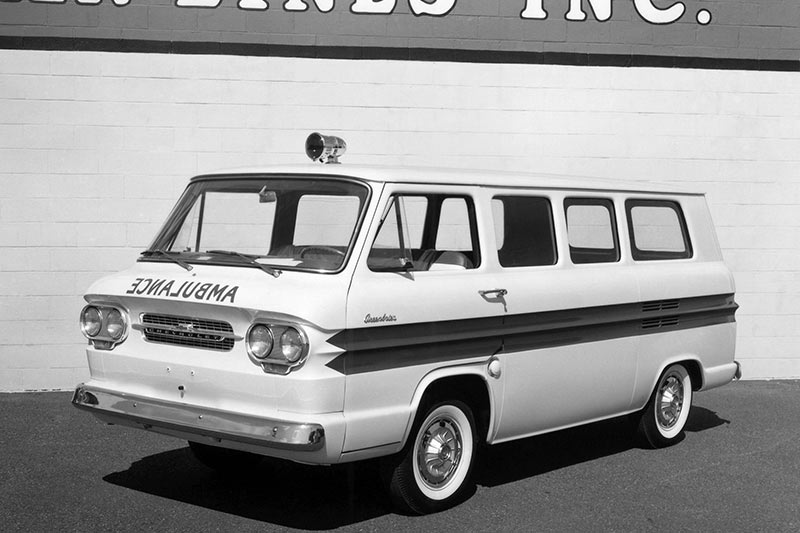
The Trivial Pursuit column of the December 2016 issue of Unique Cars magazine brought back many memories. The microbus-styled thing called a Greenbrier was my family’s first car, a white 1962 model with six-doors, an air-cooled, six-cylinder Corvair engine and automatic transmission. ‘There is our car!’ my mother said when it was first parked in front of our home in October 1961.
It was a versatile vehicle for a family that was soon to have three young children. You could roll on the baby carriage (pram) or the bicycles for a family trip. The Greenbrier also did duty hauling my father’s motorcycle and transporting the entire dining room set to a factory for rehab. And it ventured from New York City on road trips to Virginia, Pennsylvania, upstate New York, the New England states, Wisconsin, Michigan and Ontario, Canada.
In 1973 by parents sold their Greenbrier and carrying on the tradition, bought a new VW Bus.
Lawrence Stelter
Brooklyn, NY, USA
Nice to hear from you Lawrence. And good to know Unique Cars has a following in the US of A. Though, clearly, it’s still being delivered on a real slow boat if you’ve only just read the last issue from 2016. Good to see, too, that we managed to stir some fond memories.
A Greenbriar must have been a blast to drive. I can just imagine those sketchy, 60s dynamics with a Corvair flat-six to power them must have been interesting. But I was lucky enough to visit the areas you mentioned last year when I took some time off from skinning my knuckles and peering at a computer screen and rented an apartment in New York for a week and then a Jeep for the next three weeks and had me a look-around.
I think my favourite part was Maine, where I stumbled across the Owls Head Motor Museum. I was so impressed, I actually did a little yarn for this magazine, and I’d dearly love to get back there one day. Driving in the US is great fun; you don’t see the same degree of highway-patrol action and you kind of have to be doing something pretty daft to get into trouble with the law. Unlike here, where a handful of klicks over the limit will see your wallet empty quick smart. I liked the locals in that part of America, too. They were laid back and just folksy enough, but even in New York, I didn’t really see anything of the legendary who-cares-screw-you attitude that New Yorkers seem to have earned for themselves. Oh sure, they’re pretty direct folks and won’t hesitate to tell you how it is, but by and large we all got on just fine. And a pastrami-on-rye at Katz’s deli (where the famous, ‘I’ll have what she’s having’ scene from When Harry Met Sally was shot)? Heaven on a plate. Try the matzo-ball soup while you’re at it.
Forget Wagner, give me Weber
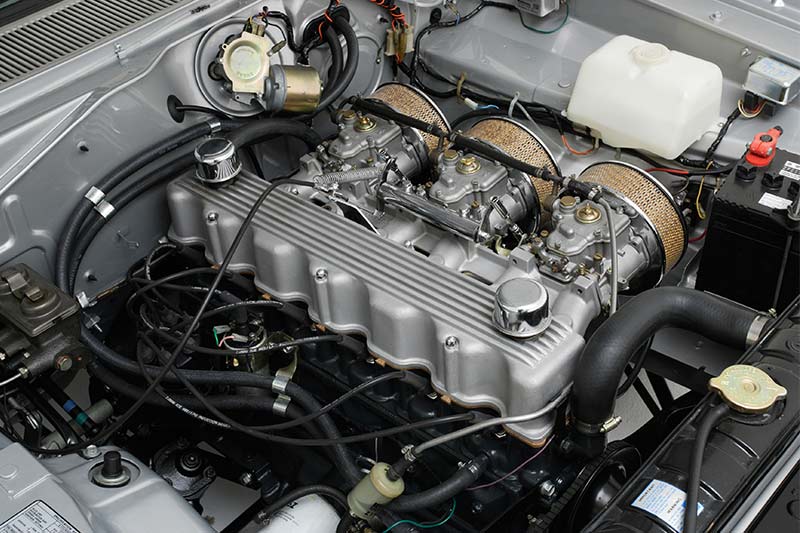
I could not help but laugh about the conversation on exhaust notes on cars and this one will live forever in my memories; a nice big fat 351 Cleveland in a coupe with four 40mm IDF Webers. You’d get on the top of Greenmount, a very steep descent into Perth, and pull the auto back into second. With no throttle application you’d roll down the hill with the Webers fuelling up into the hot muffler and clacking and popping out the back. It was even better in the tunnel, loading up the system with a quick stab of the throttle and then backing off for more of the same.
Alas the Webers are now off the car, however they have now been replaced with a healthy, hydraulic roller-cammed 351 with twin two-and-a-half-inch exhaust with no balance tube that sounds the best when it gets past 3500rpm. It’s best just to keep it quiet around town but it’s only a couple of minutes to get out of town and rip through those toploader gears with that wonderful tone out of the rear of the car. The boys in blue have only ever pulled me over to have a look at the car in the 10 years I’ve owned it. Motor on.
Dave Gray,
WA
You are a man after my own, black, heart, Dave. And nice to see you still own the old girl, albeit without those tuneful Webers. Funny isn’t it, when it comes to the wallopers: I’ve owned a range of loud-ish cars over the years, and motorbikes as well. What I’ve found is that if you’re riding/driving like a dick, then a loud exhaust is one more thing to book you for. But take it easy and you’re generally left alone. I know that statement will bring howls of protest from anybody who has recently been done for a loud zorst, and it’s true that there are some mean-spirited coppers out there.
The other thing I’ve learned over the years is that a slightly naughty exhaust is much more likely to be ignored if the rest of the car looks like it’s meant to be that way. A clean, otherwise original SLR/5000, for instance, will probably be left alone even if it’s making a small racket. But the same make and model with a not-too-engineered small-block conversion and bog falling out of it will be a major contender for this week’s episode of You’re Nicked.
Meanwhile, I can understand why you ditched those Webers at some point in the last decade, too, Dave. I own a VH Charger (still very much a project at this stage) and the first thing I did was fit a set of triple Webers. But despite everything I, and a few blokes who know their carbs, did, we could never get that 265 running sweetly with the triples on board. I ended up switching to a modern Holley four-barrel with a mechanical choke and vacuum secondaries and now the old Val fires up and idles just like a bought one. The point being that if you can drag the car out of the garage on a Saturday morning to either drive it, or tune it. I’ll take the former every time, thanks. Same goes for the hillclimb car I’m building. I know it’d make more grunt on triples, but I’ve gone for another Holley, purely because when I roll it off the trailer, it’ll be to race it, not fiddle with the damn carbs.
Those Hoinvilles again
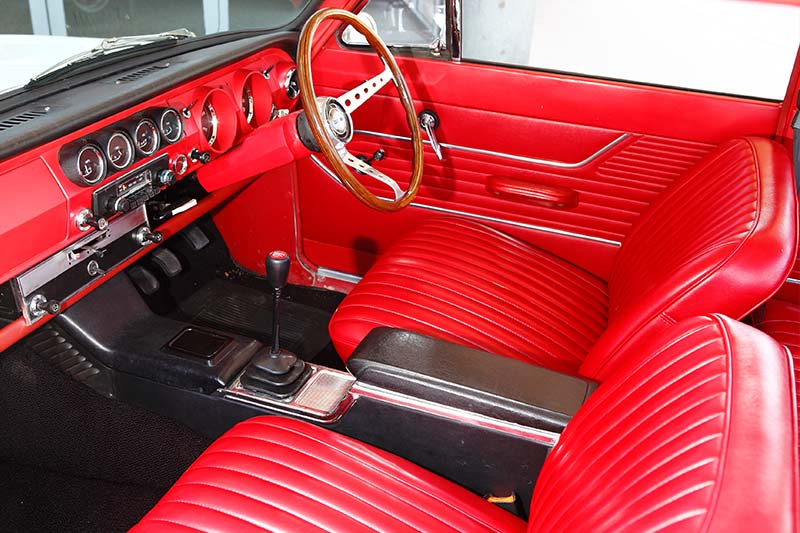
I follow your Morley’s Worksop ramblings with some interest (and occasional disbelief) in Unique Cars. In the August issue (404) you made mention of Graham Hoinville in connection with the Cortina GT500.
I am in the final stages of writing Graham’s biography, titled My Life in Motor Sport. It should be available before Christmas, and covers his early racing in a supercharged MGTC, his partnership with Harry Firth in trials and rallies, the Ford participation in the East African Safari and the London to Sydney marathon, his role in the formation of CAMS and much, much more. If you like I will forward you a review copy. Keep up the good bullshit.
Bob Watson,
For those of you who came in late, let me explain that Bob Watson is one of this country’s best engineers, competition drivers, motorsport brains and writers, and worthy of any number of biographies of his own. I’ve worked with Bob on magazine road tests and admire his ability to tell a good car from a crook one and to call a spade a bloody shovel in the process. So thanks Bob, and good to hear from you.
Sounds like the Graham Hoinville biog will be a ripper, and it also sounds like the man himself must be one of the most experienced motorsport characters this joint has ever turned out. So, yeah, I’d love to see a copy of the book when it’s published, but let’s make this interesting and give a copy away as a readers’ competition prize in this column (which clearly amuses you from time to time). Drop me a copy when you have it and in the meantime, I’ll come up with a question for the quiz. First correct answer wins the book.
And Bob: Don’t forget to autograph the book. Meantime, it seems those Hoinville tentacles are still spreading. Check out the next letter…
A bit silly?
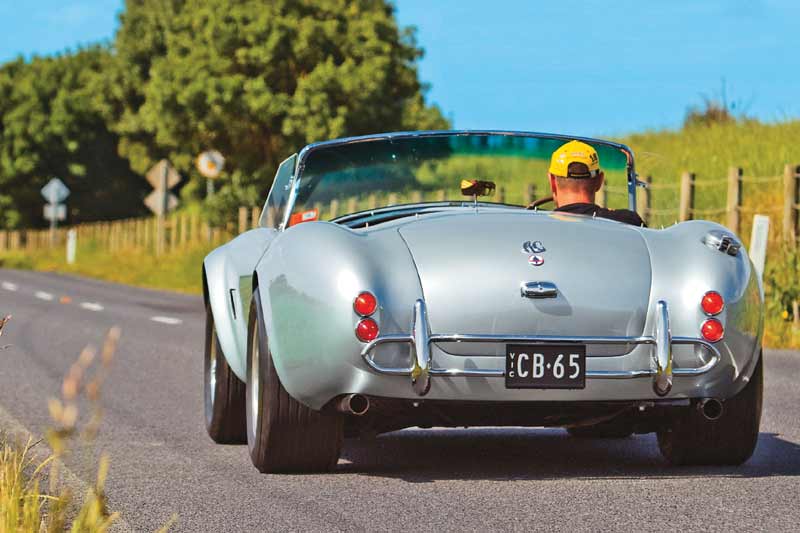
I was reading the mag where you mentioned the Mustang drift car that you drove some time ago. Was that the supercharged V10 convertible one built around the year 2000? If that is the same car then my dad has that motor and it will eventually (hopefully) be going into an AC Cobra replica which should be a little silly to drive. If you want any more info then get back to me. Cheers and love your column.
Darryl Staszynski,
Darryl, it certainly sounds as though we’re talking about the same engine; it was fitted to a Ford-sponsored project car that was largely the work of Steve Hoinville (son of Graham and, along with the Cortina GT500, the car that got us kicked off on the subject of Hoinvilles in general.
I actually got to drive the Mustang drift car around the Ford proving ground back in the day and, I have to say, it was a pretty big handful with those 10 cylinders all trying to peel the tyres off the rims. But then it kind of vanished and although the word at the time was that it was due to debut at that year’s SummerNats in Canberra, I can’t recall if it did and, if it did, whether it managed to impress the notoriously tough SummerNats crowd. Certainly, though, it had the on-paper credentials to be a winner and I recall it was incredible torquey to drive.
These were the days, of course, just after the unloved AU Falcon with its 14-inch steel wheels and no V8 option had been released, and Ford Oz was on the back foot, trying to convince us all that it still had its mojo. Enter a Mustang convertible, a V10 truck engine and Steve Hoinville (not necessarily in that order).
Should I even ask how you dad came to be in possession of such a nuclear warhead as this particular V10? Does North Korea know he’s got it? And further to that, has your dear father had a recent check-up from the neck up? I mean, building an AC Cobra replica is one thing, but powering it with a pinless grenade is another altogether. That said, if he ever gets it on the road, please send us pics and video of the thing and we’ll share it with the UC world. Come to think of it, even if your dad just gets the V10 fired up, I’d love to come and have a look and a listen. From a safe distance, you understand…
TRIVIAL PURSUIT
Spacemaster
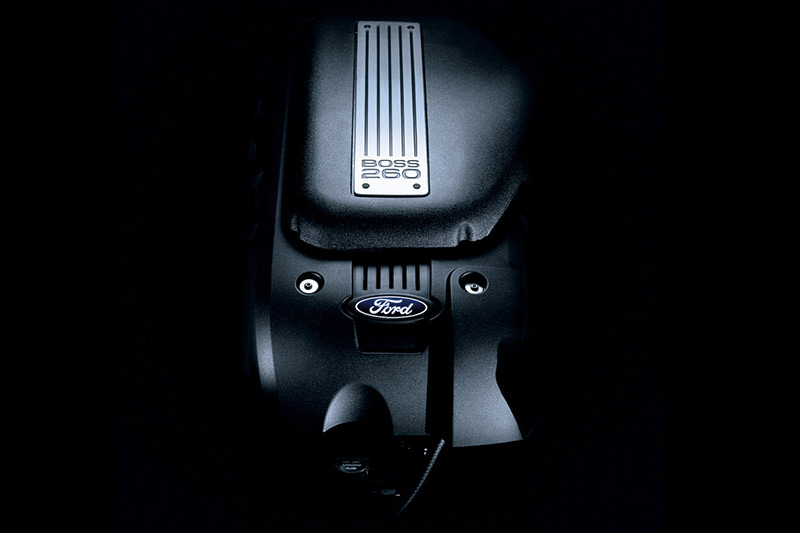
Remember the 5.4-litre DOHC V8 Ford was putting in XR8s in BA/BF form? Great motor in a lot of ways, but just never gained traction with the performance industry that was more interested in Holden’s Gen 3 V8. Which means, of course, that those XR8s are great buys now. But have you ever wondered why there’s a little piece of tape on the corner of each rocker cover? The engine was such a tight fit in the Falcon’s engine bay, that the tape helped the engine slide into place from underneath (on the production line) without taking paint off the suspension towers. Now that’s tight!
Ya knob

What’s your favourite local-car gear-knob? For me, it’s got to be the `cobra’s head’ number on four-speed Chargers. The gearbox itself was a garden variety Single Rail, but that gear knob was worth the entry. Other notables would be the golf-ball knob on some SL/R Toranas and other Holdens back in HQ times and even the stitched Momo knob on some HSVs. But that’s just me. What about you? Next month: Steering wheels.
Write to Morley c/o uniquecars@primecreative.com.au or Unique Cars magazine, 379 Docklands Drive, Docklands, Victoria 3008
Unique Cars magazine Value Guides
Sell your car for free right here
Get your monthly fix of news, reviews and stories on the greatest cars and minds in the automotive world.
Subscribe

.jpg)








.jpg)




